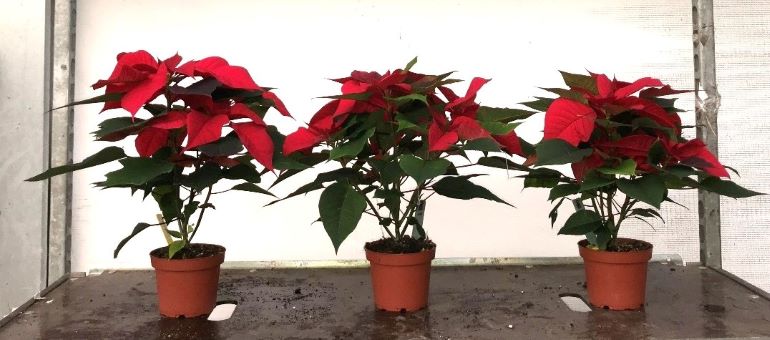Please click here to access the main AHDB website and other sectors.
- Home
- Knowledge library
- Other chemicals that may affect ornamental plant growth
Other chemicals that may affect ornamental plant growth
Other chemicals such as plant protection products and fertilisers can also impact plant growth and should be accounted for within any PGR programme.
The use of chemical plant growth regulators on protected ornamental crops
Fungicides and fertilisers
Some triazole fungicides can reduce plant growth (Table 11). Such fungicide products are authorised for disease control only and are not authorised for plant growth regulation. Where such fungicides are routinely used in disease control programmes, a reduction in the rate of any plant growth regulators applied may be required to avoid excessive growth control.
The fungicides listed are those which may potentially have growth regulatory effects when used in disease control programmes. Other fungicides within this chemical group may also have the potential to check plant growth.
As part of the Bedding and Pot Plant Centre (BPPC) project trials, a foliar fertiliser based on seaweed extract (Control) was shown to restrict plant height in poinsettia when applied at the label rate (5.0 ml/L).
Table 11. Fungicides with growth regulatory effects
| Group name | Chemical group | Active ingredient | Example product |
| Demethylation inhibitors |
Triazoles |
Myclobutanil | Systhane 20 EW |
| Penconazole | Topas |
Impact of seaweed foliar fertiliser (centre and right) compared to untreated control (left)

Courtesy and copyright of ADAS Horticulture.
Useful links
For further information on the use of Control on poinsettia see the AHDB/BPPC webpage ‘New plant growth regulators for use on poinsettia’.
Impact of seaweed based fertiliser on poinsettia growth
Authors
Authors – Chloe Whiteside, Jill England and David Talbot. ADAS Horticulture.
Original authors – Jill England and David Talbot. ADAS Horticulture.
Webpage content correct as of May 2021.
Topics:
Sectors:
Tags:

